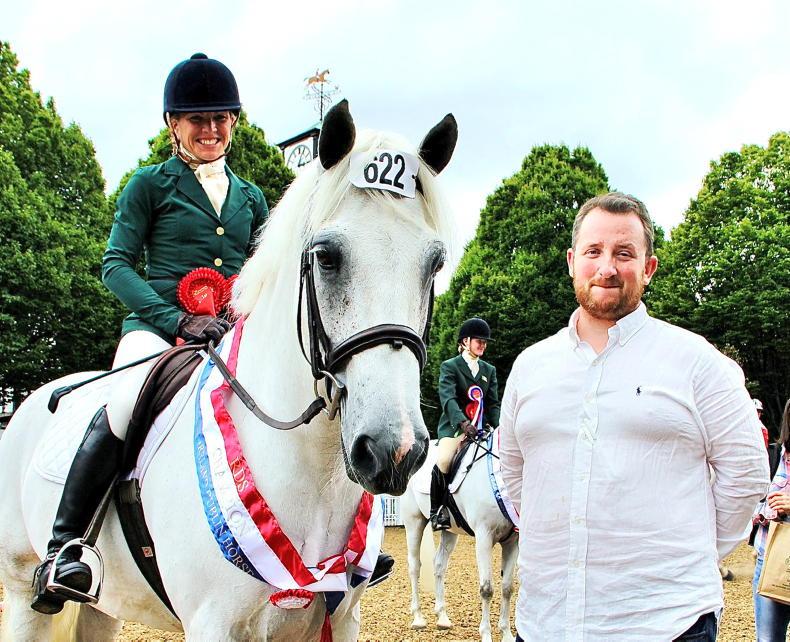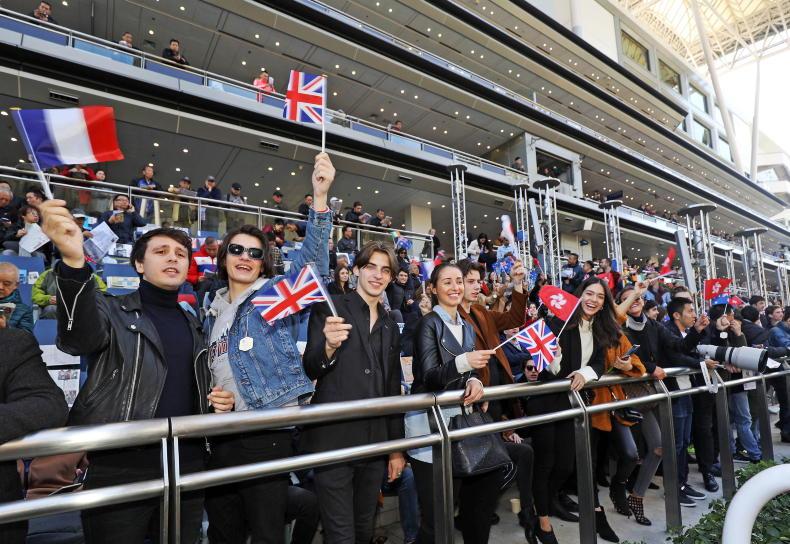Starting next Sunday morning, Irish punters can join the famously deep Hong Kong betting pools through the thetote.com again after a six-week off-season break.
The racecards, previews and results will also be carried on The Irish Field throughout the season.
The partnership between Tote Ireland and the Hong Kong Jockey Club (HKJC) started in May. After a brief taste towards the end of last season it is sure to prove attractive to serious bettors.
Hong Kong boasts the biggest per-race betting turnover in the world. Turnover per race among the various pools on offer typically reaches a figure in the region of €20 million and Irish players will initially be allowed to be bet into the Win, Place and Tierce (Trifecta pools).
On a race-to-race basis, it is hard to conceive of a more competitive racing environment anywhere in the world. The 1,200 or so horses in the Hong Kong system are divided between 24 trainers at present at Sha Tin with a maximum of 60 horses allowed per stable.
It is all flat racing. Full fields are always coveted by the HKJC to generate maximum turnover with fields of 14 sanctioned for Sha Tin and 12 for the tighter Happy Valley circuit. Only these two tracks are used.
Sha Tin is usually for weekend programmes starting at around 1pm local time (5am in Ireland in winter, 6am in summer) whereas Happy Valley is most often the venue for midweek cards starting at 7.15pm (11.15am in winter, 12.15pm summertime in Ireland).
Sha Tin also hosts a dirt track, similar to American dirt surfaces, and around 10% of HK’s races take place on this course. The vast majority of morning trackwork is conducted on the dirt also. The Sha Tin turf course is a galloping track of nine-furlong circumference with a home straight in excess of two furlongs. Happy Valley is a fraction over seven furlongs in circumference with the home straight of about a furlong-and-a-half.
TRACK BIAS
Track bias is always something that has to be monitored. For example, a rain-affected track on the dirt tends to favour front-runners. On the turf tracks, there are four different configurations used each meeting whereby the rail is pushed further out from the inside to allow the churned grass to be reseeded and regenerate.
Speed maps of predicted positions after settling can be found in the Speed Pro section of the Hong Kong Jockey Club.
These maps are sourced by the HKJC from independent form experts judged on previous racing patterns and those established in trials, although they can only be deemed as a guide.
In terms of average distance, most of the races staged are for sprinters and milers. Horses from Australia and New Zealand make up the majority of the Hong Kong racing population although a sizeable pool of Irish-bred and formerly Irish-trained horses, comprising about 15% of the population, also regularly punch above their weight.
Champions of recent times in Hong Kong that have hailed from Ireland include Designs On Rome, Peniaphobia, Gold-Fun, Lucky Nine, Military Attack and Rich Tapestry.
Other Hong Kong champions since the turn of the century include the world champion sprinters Silent Witness and Sacred Kingdom, Royal Ascot winner Little Bridge, the brilliant Fairy King Prawn, world champion miler Able Friend, Viva Pataca and Dubai Sheema Classic winner Vengeance Of Rain.
It is a long list and the quality is constantly kept to a high standard since owners with permits are always keen to spend big to recruit the best thoroughbred talent from around the world.
INTERNATIONAL RACES
The key fixture of the Hong Kong racing calendar, which starts from early September and ends in around mid-July, is the Longines Hong Kong International Races (HKIR) meeting in December.
The day consists of four International Group 1 races with distances ranging from six furlongs (1,200 metres) to a mile and a half (2,400 metres), with the 10-furlong (2000-metre) Longines Hong Kong Cup topping the prize money chart of HK$25 million (over €2.7 million).
This meeting attracts many top runners from all around the world. The Aidan O’Brien-trained Highland Reel won the 12-furlong Vase in 2015 and finished second in the same race last December.
For European top gallopers, the long travelling concern would be offset by the fact that it is off-season in their flat racing calendar so this provides a good opportunity for them in search of top races.
There are Group 1 races run every month from December to late May in Hong Kong. These races also make up the Hong Kong Triple Crown, Hong Kong Speed Series, the four-year-old Classic Series and Global Sprint Challenge.
Over 98% of the races staged in Hong Kong are handicaps. The grades, from lowest to highest, are:
Class 5: rated 40 and below
Class 4: rated 40-60
Class 3: rated 60-80
Class 2: rated 80-100
Class 1: rated 100+
As such, the maximum spread in handicaps is usually 20lb, ranging from 133lb (9st 7lb) to 113lb (8st 1lb).
Not surprisingly, considering the lavish amounts bet on these races, the prize-money in Hong Kong is very generous, with the lowest grade winners’ purse weighing in at over €40,000.
TACTICS CRUCIAL
Another thing to note is how tightly they race. Riders’ position in transit is crucial, so missing the start and being caught wide and without cover is very much frowned upon, given how little there often is between horses in terms of ability and how accurately their handicap marks often are. In short, there is little margin for error and there is scarcely a harder place in the world to ride a winner.
There are no hard and fast rules to finding winners in Hong Kong although the domination in recent years by the gifted Brazilian jockey Joao Moreira has undoubtedly transformed the racing landscape. The record-breaking ability of the ‘Magic Man’ to partner winners is unparalleled and, as a result, his mounts are routinely much shorter odds than if someone else was riding.
Moreira riding trebles, four-timers and even bigger hauls at any given meeting has become the norm and, memorably, he rode eight winners at one Sha Tin programme early in March of this year. Opposing his mounts clearly can be difficult, but it can be a profitable strategy.
Other jockeys to note are Australian rider and former champion, Zac Purton, by some margin the second most successful rider in the territory nowadays.
A special word should also be made for Kildare native Neil Callan who has carved out tremendous niche for himself there over the past few years and is third on the list. South African rider Douglas Whyte ruled the roost for 13 years consecutively from the start of this century and still ranks prominently.
In terms of trainers, the ‘big four’ has remained much the same over several years. Dominant in terms of championships (nine times) is the gifted Australian, John Size, whereas his compatriot, John Moore, usually heads the prize-money earnings table at the end of each season.
Caspar Fownes, so often the trainer who fares best at Happy Valley, and Tony Cruz are both former champions who can rarely be ignored.
Hong Kong racing might take a little getting used to, but many believe it represents the pinnacle of the sport and its introduction to the British racing public has proved very popular. Either way, the racing is very well organised, it is very competitive and can offer Irish punters a compelling alternative to the norm.
The races from Sha Tin and Happy Valley will continue to be shown live on At The Races and Racing UK this season.


 This is a subscriber-only article
This is a subscriber-only article
 It looks like you're browsing in private mode
It looks like you're browsing in private mode









SHARING OPTIONS: